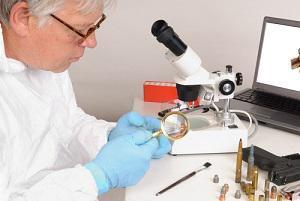 Forensic science is the application of research, analysis, technology, and science in civil and criminal law proceedings. If you have turned on a television in the last decade and a half, you have probably seen at least one if not dozens of dramas depicting fictionalized versions of forensic investigation. When forensics experts provide testimony or evidence in a criminal case, it is easy to presume that the results in question are fully reliable and backed by solid scientific research.
Forensic science is the application of research, analysis, technology, and science in civil and criminal law proceedings. If you have turned on a television in the last decade and a half, you have probably seen at least one if not dozens of dramas depicting fictionalized versions of forensic investigation. When forensics experts provide testimony or evidence in a criminal case, it is easy to presume that the results in question are fully reliable and backed by solid scientific research.
In recent years, however, it appears that forensic investigators have been overstating the reliability of some of their most well-known methods, including those used to “match” a bullet to a particular firearm. The issue has become such a concern that an appellate court judge in Washington, D.C. addressed the matter in an opinion filed in the appeal of a murder conviction.
Common Methodology
Much like the analysis of fingerprints, firearms ballistic analysis in intended to narrow down a list of possible weapons that were possibly used in the commission of a crime. The process itself is fairly straightforward. Using the suspected gun, technicians fire a bullet into a chamber that allows for the recovery of the slug. The bullet is then compared side-by-side with bullets found at the scene of the alleged crime, or in the body of the victim, as the case may be.
The long-standing premise of such analysis is that the barrel of each gun retains certain tool marks and striations from the manufacturing process which, in turn, leaves a unique pattern of marks and grooves on each bullet fired from that gun. While the technology for analyzing bullets has certainly advanced, the determination of a match is often made by a technician who simply compared the bullets visually.
No Such Thing as 100 Percent Sure
The problem is, however, that such “matches” are often presented as irrefutable evidence, when, in fact, the science does not back up such claims. There has not been enough research done and there is no reliable statistics that show how often bullets from two different guns could look the same, or whether a particular barrel’s patterns are completely unique.
In courtrooms around the country, however, forensic experts continue to make statements regarding ballistic evidence with absolute or 100 percent certainty. Earlier this year, D.C. Appeals Court Judge Catharine Easterly decried such testimony as “the vision of a psychic,” rather the application of proven science. Even a recent White House-commissioned report suggests that judges who allow firearms-related testimony should ensure that the jurors are made aware that error rates among firearms investigators are higher than they might expect.
Contact an Aggressive Defense Attorney
If you have been charged with a crime and prosecutors have presented forensic evidence against you, contact an experienced Hartford criminal defense attorney right away. You need an advocate who will fight for your rights and protect your future. Call 860-290-8690 for a confidential consultation at the Woolf & Ross Law Firm, LLC, today.
Sources:
http://www.popularmechanics.com/science/health/a4548/4325797/
https://www.washingtonpost.com/local/public-safety/dc-court-of-appeals-judge-faults-overstated-forensic-gun-match-claims/2016/01/22/a4dbd8c2-c078-11e5-83d4-42e3bceea902_story.html
http://www.thenewsstar.com/story/opinion/editorials/2016/09/30/convicting-americans-based-junk-science/91334308/
 50 Founders Plaza
50 Founders Plaza

